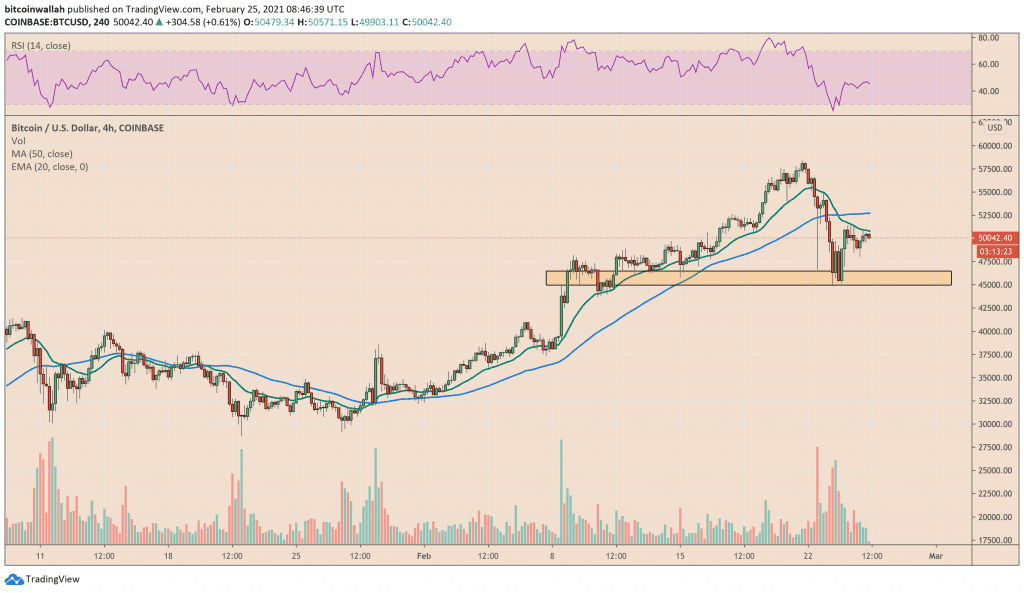Bitcoin was fluctuating above and below $50,000 during the Thursday session as traders received mixed signals from the macroeconomic landscape.
At first, the Federal Reserve Chairman’s recent testimony to the US Congress reiterated the central bank’s commitment to keeping interest rates near zero and purchasing $120 billion worth of government bonds and mortgage-backed corporate securities every month.
The promise alone increased investors’ risk appetite. They continued on to selling US government bonds, sending the yields on the 10-year note to their best levels since February 2020. Bitcoin, a super-volatile asset, has benefited the most by attracting daytraders and institutions that see the Fed’s quantitative easing programs as a cue for a bullish cryptocurrency against a weaker-looking US dollar.
That was visible all across the Wednesday session as two Wall Street firms—that were already holding bitcoin in their reserves—announced that they are increasing their exposure in the scarcer asset. MicroStrategy, a Nasdaq-listed business intelligence company, pushed its bitcoin treasury from about 71,000 BTC to over 95,000 BTC after investing an additional $1.06 billion.
Meanwhile, Jack Dorsey-backed Square added $170 million worth of BTC to its profile atop its $50 million worth of investment into the cryptocurrency.
Offsetting Bitcoin Bulls
Bitcoin prices, which had fallen by over 23 percent from their record high of $58,367 earlier this week, recovered back to as much as $51,415 on Wednesday. Nevertheless, the cryptocurrency was unable to push its upside bias any further as investors’ focus also remained glued on the US economy’s recovery prospects.

The bond sell-off eased late Wednesday after the US Food and Drug Administration approved the Johnson and Johnson’s coronavirus vaccine “safe and effective” while authorizing it for emergency use. Faster recovery in the pandemic could reduce the demand for additional fiscal and dovish programs from the US government, affecting Bitcoin’s growth.
But David Rosenberg, a longtime Wall Street economist, noted that a full economic recovery would take a long time.
“There’s this view that we’re going to embark on a massive spending party and life will go back to normal,” he told WSJ. “I just don’t believe that.”
Long-term, bulls expect Bitcoin to reach fresh highs as soon as the inflation fears kick in with lower fiat valuations and higher consumer price index.


